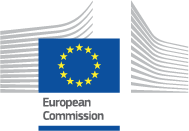WORKING WITH DG ECHO AS MEMBER STATES' SPECIALISED AGENCIES | 2021 - 2027
2. PROJECT DATA OVERVIEW BY COUNTRY
2. Project Data Overview By Country
3. Humanitarian Organisations In The Area
4. Needs Assessment And Risk Analysis
12. Visibility, Communication And Information Activities
13. Financial Overview Of The Action
14. Requests For Alternative Arrangements
15. Administrative Information
In order to fill in the chapter, at least one country needs to be added by clicking on the “+” appearing in the menu. The partner needs to add as many tabs as the number of countries where the Action is taking place (maximum 10). In case the partner needs to list more than 10 countries, it can create a group of countries (see below in 2.1.1).
2.1 GEOGRAPHICAL INFORMATION
Information provided in this section, might be used to assess whether the geographical areas of intervention are relevant and in line with DG ECHO strategy. The location will also provide indications to DG ECHO for its monitoring visits. The partner will ensure that the countries and regions of intervention correspond to the scope of the DG ECHO financing decision/HIP. When available, it is possible to annex a map of the locations covered by the Action.
2.1.1 COUNTRY
This section will display the country of intervention. Countries are pre-encoded: the partner needs to type the first 4 characters and select the preferred option from the displayed dropdown menu.
If the partner needs to encode a group of countries, it has to use "Group" as a keyword. Groups of countries should be used if detailed numerical data (allocated amounts, various breakdowns of beneficiaries) are not available at country level and can only be provided for entire area of intervention.
When selecting a group it is obligatory to define the list of countries belonging to it (minimum 10) and provide the name of the group.
The groups of countries can be used in combination with countries by adding 2 zones of intervention (one dedicated to the group of countries and the other detailing information at specific country level).
If the partner needs to encode global action, it has to use "Global action" as a keyword. Global actions are actions with world-wide outputs and outcomes, for example global response to covid-19. For such actions detailed numerical data (allocated amounts, various breakdowns of beneficiaries) are not encoded at individual country level but globally at project level.
2.2 PLACES OF INTERVENTION
The partner needs to add as many locations as needed. For each one of them, it has to detail
- The name of the place of intervention: the partners need to give short and meaningful name to the place of intervention. This name will be used later in this chapter to link sectors with places of intervention. If the action has more than 10 countries of implementation use 'N/A';
- The upper administrative level (province): is the name of the administrative region per location. Indicate first the "upper administrative level" such as "Province". Use 'N/A' if administrative region cannot be determined or if the action has more than 10 countries of implementation;
- The lowest administrative level (district): is equivalent to "district". Use 'N/A' if administrative region cannot be determined or if the action has more than 10 countries of implementation; This chapter presents all numerical data per country and sector of intervention. At proposal / modification stage, these numbers represent the target figures to be achieved by the Action. The encoding of such information is requested in any case at Final reporting stage.
- The type: urban, rural or both.
2.3 INFORMATION ON BENEFICIARIES
This section is very important, as it display the Action targets (number of people directly benefitting from the provided supplies and services) and it is used for data collection.
2.3.1 NUMBER OF DIRECT UNIQUE BENEFICIARIES
The partner must provide the number of beneficiaries at country level.
Please note that it should be an "individual" beneficiary, directly benefitting from at least one sector of the action (not households), within the timeframe of the Action.
Avoid doublecounting: if the same beneficiary benefits from several sectors, they should be counted only once.
The partner needs to encode the totals of female and male beneficiaries for this country, and the system will automatically calculate the final number. In case precise disaggregated data is not available at proposal / modification stage, the partner can use reasonable estimates and explain the calculation in section 2.5. Actual numbers must be provided in interim and final report.
2.3.2 NUMBER OF UNIQUE BENEFICIARIES BY SEX AND AGE
The partner must provide estimated numbers of female and male beneficiaries in different age groups as this is relevant for identifying the different needs of women and men, be they children, adults or older persons.
Recognising that detailed disaggregation is difficult at initial stage, the partner may use global figures and reasonable estimates. The partner may explain the absence of data in section 2.5.
Actual numbers must be used in the interim and final reports. Aggregated number of female/male beneficiaries for all age categories needs to be equal to the number of female/male beneficiaries in a given country.
2.3.3 NUMBER OF UNIQUE BENEFICIARIES WITH DISABILITIES
The partner must provide the number of beneficiaries who are people with disabilities, disaggregated by sex.
The Use of the Washington Group Short Set of Questions as well as the involvement of persons with disabilities, including children, their caregivers and organisations of persons with disabilities is strongly encouraged.
Avoid double-counting: if the same beneficiary benefits from several sectors, he/she should be counted only once.
Reasonable estimates are acceptable in proposals and modification requests; actual numbers must be used in interim and final report.
The number of female/male beneficiaries with disabilities needs to be lower or equal to respectively number of female/male beneficiaries in a given country.
2.3.4 NUMBER OF UNIQUE BENEFICIARIES BY PROFILE
Here the partner needs to indicate the number of beneficiaries by type: local population, IDPs, refugees / asylum seekers, other persons on the move (persons having crossed international borders but who have not lodged an asylum claim or been granted refugee status), returnees (applies both to "refugees returnees" and 'IDPs returnees"), in camp / camp like.
The aggregated number of local population beneficiaries, internally displaced beneficiaries, refugees, and other persons on the move needs to be equal to the total number of beneficiaries in a given country.
Reasonable estimates are acceptable in proposals and modification requests; actual numbers must be used in interim and final reports.
2.3.5 NUMBER OF ORGANISATIONS DIRECTLY TARGETED AND BENEFITTING FROM THE ACTION
The term Organisation does not necessarily imply that it is a legal entity (it could for example also be a disaster management committee in a village).
The partner needs to differentiate local and international organisations.
2.4 SECTORAL INFORMATION
in this section the partner has to add as many sectors (1 tab per sector) as needed for the country of intervention. The list of sectors selected in chapter 2 needs to match with sectors used in the result section in chapter 7.3.
2.4.1 SECTOR
The relevant sector has to be selected from the drop-down menu.
2.4.2 LOCATIONS FOR THIS SECTOR
Each country might have one or more locations (listed in section 2.2). For each sector in a given country, the partner has to indicate one or more of these exact locations.
2.4.3 TOTAL AMOUNT FOR THIS SECTOR
This amount should refer to the part of the total costs of the action that can be attributed to this sector and should correspond to the information provided in the budget of the action.
Aggregated amounts for all sectors within all areas of intervention cannot exceed the amount of total costs defined in chapter 13 for respective action stage.
2.4.4 NUMBER OF UNIQUE BENEFICIARIES IN THIS SECTOR
The partner must provide the number of individual (not households) directly benefitting from this specific sector, within the timeframe of the Action.
The partner needs to encode the totals of female and male beneficiaries for this sector, and the system will automatically calculate the final number. The number of female/male beneficiaries in a specific sector cannot exceed respectively the number of female/male beneficiaries in given area for intervention.
In case precise disaggregated data is not available at proposal / modification stage, the partner can use reasonable estimates and explain the calculation in section 2.5. Actual numbers have to be used in interim and final report.
2.4.5 TRANSFER MODALITIES IN THIS SECTOR
this section should be filled in only if applicable: when doing so, DG ECHO expects its partners to use the following definitions (as per CaLP glossary) of the three types of transfer modalities::
- Cash transfers the provision of assistance in the form of money - either physical currency or e-cash - to recipients (individuals, households or communities). Cash transfers are by definition unrestricted in terms of use and distinct from restricted modalities including vouchers and in-kind assistance. This means that beneficiaries can choose how to use the transfer.
- Vouchers A paper, token or e-voucher that can be exchanged for a set quantity or value of goods or services, denominated either as a cash value (e.g. $15) or predetermined commodities (e.g. 5 kg maize) or specific services (e.g. milling of 5 kg of maize), or a combination of value and commodities. Vouchers are restricted by default, although the degree of restriction will vary based on the programme design and type of voucher (the restriction of a commodity voucher comes in terms of the use, time and place of redemption and for value voucher in terms of the time and/or place of redemption). They are redeemable with preselected vendors or in ‘fairs’ created by the implementing agency.
- In-kind assistance: humanitarian assistance provided in the form of physical goods or commodities. In-kind assistance is restricted by default as recipients are not able to choose what they are given.
The selection of modalities should be based on robust analyses. Unless duly justified DG ECHO’s policy is to use cash transfers as the default modality, where it is appropriate to the context (see justification box 2.4.6 “explain why cash transfers were not used”). Cash transfers can serve as a complement to, or be complemented by other assistance modalities that help to meet basic needs that cannot be met by cash.
The Single Form collects the following information on the transfer modalities:
1- Amount: the partner must indicate the total net amount in Euro provided to all the final beneficiaries / recipients receiving cash or vouchers.
- For cash modality, the amount is the total cash transferred to all beneficiaries, net of all ancillary costs (bank fees, cost of debit cards, transaction costs, security).
- For value vouchers, the amount is the nominal value of vouchers to all beneficiaries, net of printing, security and handling costs.
- For commodity vouchers, the amount is the value of redeemable goods to all beneficiaries net of storage, transport, security costs.
- For in-kind, the partner must indicate the cost of the products / good / items purchased AND transferred to all the final beneficiaries / recipients in this sector. The partner indicates only the procurement cost excluding the cost of transport, storage, etc. At proposal level the amount is estimated. At final report stage, the partner indicates the total net amount that was transferred.
The amounts encoded in these sections should match with amounts entered under code I.2.1 of the FR – budget and/or final financial statement.
- Note that the total amount transferred to the beneficiaries cannot exceed the total amount for that sector. The system will automatically calculate the “non-allocated amount”.
2 - Unique beneficiaries: Whenever some budget is allocated to specific transfer modality (cash, vouchers, in kind) the number of beneficiaries of that transfer modality cannot be equal to 0. Consequently when there are some beneficiaries of specific transfer modality there needs to be some budget allocated to that transfer modality. Number of beneficiaries for any of the transfer modalities cannot exceed the total number of beneficiaries in given sector.
Cost efficiency analysis is the study of administrative cost of a programme relative to the amount disbursed. It can inform the comparison of programmes in a given context. This requires partners to provide sufficiently detailed cost data. Regardless of the modality (cash, voucher, in-kind) and the budget of the Action, DG ECHO systematically assesses cost-efficiency.
The Total Cost to Transfer Ratio (TCTR) is a standard way of measuring efficiency, defined as the proportion of the value of transfers received by beneficiaries to the total cash programme cost. The partners shall provide the TCTR for sectors or multi-purpose cash with transfers in cash above € 1 million the partner shall provide the TCTR in this section of the SF.
The method of calculation is as follows:
TCTR of this sector = Total net transfer value of cash / Total eligible cost of this sector.
The total net transfer value of cash is the total value transferred to all beneficiaries.
The total cost of this sector is the sum of the direct cost (including the transfer value of cash) and the related apportioned amount of indirect costs for this sector.
Note: Multi-purpose cash transfer is a “cross-sectoral” category considered as a “sector” in the tab for practical reason.
For large-scale cash transfers (≥ €10 million): total eligible costs (direct and indirect) include both components A and B (see in DG ECHO cash guidance note the definition of components A, B and C).
For projects that include components A, B and C under one contract and when component C is not outsourced to an independent entity, the total direct and indirect eligible costs for the calculation of the TCTR shall include the three components (A + B + C).
- For sections 2.4.8. – 2.4.11. Provide the number of unique beneficiaries. Avoid double-counting: if the same beneficiaries benefit from several interventions within the same sector, they should be counted only once. Read only at RQ/MR; actual numbers to be provided in IR/FR. Attention: the overall number of beneficiaries per different sector specific categories cannot exceed the total number of beneficiaries in a given sector.
2.5 POSSIBLE COMMENTS
The partner can clarify in this box a calculation method used for example to disaggregate households information into individuals. ; or if relevant: to justify a low cash transfer ratio or a decrease of the ratio over the duration of the programme.





